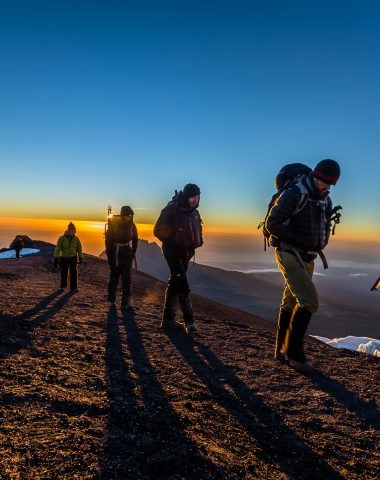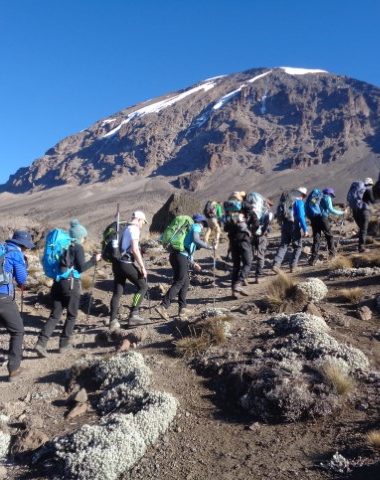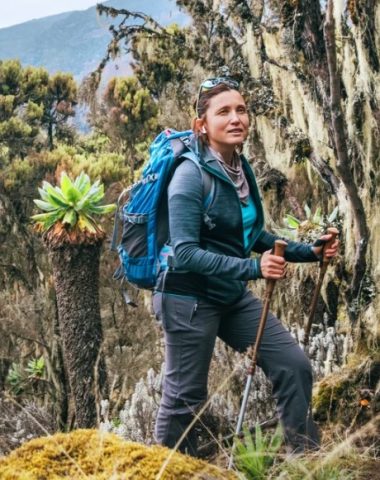Best Time to Climb Mount Kilimanjaro
Mount Kilimanjaro, located in Tanzania, has a rich history dating back millions of years. Formed by volcanic activity, it emerged as a stratovolcano and underwent various eruptions and glaciations over time. Its first recorded ascent was in 1889 by German geologist Hans Meyer and Austrian mountaineer Ludwig Purtscheller. The mountain has since attracted adventurers, researchers, and nature enthusiasts, becoming a UNESCO World Heritage Site. Kilimanjaro holds cultural significance for the Chagga people who reside in its foothills, and its breathtaking beauty and ecological diversity continue to captivate visitors from around the world.
Standing majestically in Tanzania, Mount Kilimanjaro has a captivating history that spans millions of years. This iconic mountain, with a height of approximately 5,895 meters (19,341 feet), is Africa’s tallest peak and holds the distinction of being the world’s highest freestanding mountain. Kilimanjaro’s origins can be traced to volcanic activity, and its geological transformation has played a significant role in shaping its current form. Over time, this magnificent mountain has become a symbol of natural wonder and an enticing challenge for climbers and adventurers, offering them the opportunity to conquer its breathtaking heights and witness the awe-inspiring beauty that unfolds along its slopes.
Best Season:
June to October and December to February
Best Time to Climb Mount Kilimanjaro
1. Climbing Mount Kilimanjaro in January:
January is an ideal time to climb Mount Kilimanjaro with lower rainfall, warmer temperatures, and the potential for beginners to reach the summit with proper preparation. A well-curated gear list including layered clothing, sturdy equipment, and a hydration system is crucial for a successful climb.
2. Climbing Mount Kilimanjaro in February:
February is considered one of the best months to climb Mount Kilimanjaro due to its warmer temperatures and reduced cloud cover, providing clearer views. For an exceptional experience, climbers can opt for the Lemosho Route, which offers stunning scenery both from the summit and along the route.
3. Climbing Kilimanjaro in March:
Climbing Mount Kilimanjaro in March, during the rainy season, poses challenges due to slippery rocks and trails. However, experienced trekkers can still reach the summit. Opting for the Northern Circuit Route, with a longer and gradual ascent, enhances success rates through better acclimatization. Adequate preparation, essential gear, and awareness of the potential difficulties associated with the rainy season are crucial for a successful climb in March.
4. Climbing Kilimanjaro in April:
April on Mount Kilimanjaro is the rainy season, with continuous rainfall throughout the month. The Marangu Route can be chosen, but climbers should be prepared for wet and slippery conditions, making the climb challenging. If the clouds clear, April may offer stunning views, but proper gear and prior trekking experience are essential. Regenerate response
5. Climbing Kilimanjaro in May:
May is a relatively drier month on Mount Kilimanjaro, making it a suitable time to consider the Machame Route with moderate temperatures and scenic views. However, it’s important to be aware of the potential for high rainfall and cloudy conditions. Despite fewer climbers, proper preparation for wet weather and appropriate gear are necessary for a successful climb in May.
6. Climbing Kilimanjaro in June:
June is a challenging time to climb Kilimanjaro due to freezing temperatures, making it less favorable for inexperienced climbers. It is recommended to choose the dry seasons for a safer and more comfortable ascent.
7. Climbing Kilimanjaro in July:
July is a popular month for climbing Mount Kilimanjaro, attracting a larger number of climbers. Despite colder temperatures, the reward of breathtaking mountain views makes it appealing. It’s crucial to be well-prepared with suitable cold-weather gear to ensure warmth and comfort during the ascent in July
8. Climbing Kilimanjaro in August:
August is widely considered one of the best times to climb Mount Kilimanjaro due to dry and dusty conditions with minimal rainfall. Despite potential crowds, the favorable weather and scenic views make it an attractive period for climbers.
9. Climbing Kilimanjaro in September:
September is widely regarded as an optimal time to climb Mount Kilimanjaro due to favorable weather, pleasant temperatures, and lower rainfall. However, it’s important to anticipate higher crowds during this popular month.
10. Climbing Kilimanjaro in October:
October is another excellent time to climb Mount Kilimanjaro, with warmer temperatures and lower rainfall. The weather features moderate temperatures, medium cloud cover, and medium crowds, providing favorable conditions for a successful ascent.
11. Climbing Kilimanjaro in November:
November can indeed pose some challenges for climbers as it falls within a mini rainy season on Mount Kilimanjaro. The month is characterized by higher rainfall, which can make the climb more difficult. However, the temperatures are generally moderate, and while there may be medium cloud cover, the crowds are usually lower during this period. It’s important to be prepared for wet conditions and ensure proper gear to navigate the challenges that come with the increased rainfall.
12. Climbing Kilimanjaro in December:
December offers a favorable window for climbing Kilimanjaro, with decreased rainfall and moderate temperatures. The month typically sees medium cloud cover and crowds, providing a good balance for climbers.










